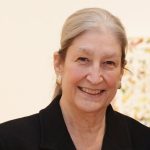Since the 1850s, cafés in Florence have been characteristic haunts: places for intense political discussions and bitter quarrels or creative spaces where kindred souls gave each other the courage to follow their passions. Once social hubs for the socially and intellectually elite, they are still a great place to visit for a bit of culture with your coffee.
The Macchiaioli movement began fermenting at Caffé Michelangiolo, a once smoky coffeehouse at via Cavour 21. It was the mid-1800s and revolutionary artists were experimenting with light-and-shadow effects using patches of color (macchie), a now-celebrated technique that was widely criticized at the time. The forward-thinking art critic Diego Martelli, landscapist Serafino De Tivoli, the cultured but controversial Telemaco Signorini and the even-tempered master Giovanni Fattori were regulars at the café’s tables.

Florence’s historic cafés have been essential to the city’s identity, particularly during Florence’s stint as the capital of Italy. Literary magazines, artistic movements and avant-garde poetry were created at many local cafés, leaving a significant mark on the city’s cultural life and influencing all of Italy. Myriad famous Italians were deeply inspired within these settings, including historian and politician Gaetano Salvemini, pro-fascist decadent poet Gabriele D’Annunzio, Futurism’s founder Filippo Tommaso Marinetti and ultra-nationalist metaphysical painter Carlo Carrà.
The world’s first coffeehouses opened in Istanbul in the 1500s. In the seventeenth and eighteenth centuries, elegant cafés—some still in operation—became part of historic cities all over Europe. Because of trade between Turkey and the Venetian Republic, the first café in Italy, Caffé Florian, opened in Venice in 1720. Its Florentine counterpart—the city’s oldest historic café—is Caffé Gilli. Founded in 1733 by a Swiss family, it is renowned for its hot cocoa and cappuccino, deemed the creamiest in town. Originally known as the ‘Sweet Breads Boutique,’ the café moved to its present location in piazza della Republic 36-39/r in the 1920s. With its stained-glass windows, Murano chandeliers, frescoed ceiling and eye-catching arches, it is the city’s only remaining Belle pique-style café; its famous clock has been working for more than 100 years. Declared a national monument in 1991, Gilli has long been a hangout for creative types and movie stars. A photo taken in 1951 by American photographer Ruth Orkin further boosted its growing fame. Titled American Girl in Italy, this iconic black-and-white photograph shows a group of young males gathered on the via Roma side of the café, leering at a young woman as she hurries past.
Another neighboring café that looks out onto the same piazza at 31-35/r is Caffé Concerto Paszkowski. Open since 1846, it was originally the bar Caffé Centrale. By 1904, it was owned by a Polish family by the name of Paszkowski, who turned it into a birreria in the hope of teaching Italians to drink beer. In the early twentieth century, musicians, scholars and artists gathered here. Anti-conformist author Giuseppe Prezzolini, founder of the exposé-style literary review La Voce (1908-1916) and Ardegno Soffici, the painter and social agitator who started its rival journal, Lacerba, met at its tables. It is where Futurism’s most adamant advocates engaged in debate; the café’s lavish Art Deco rooms with their unique mosaic floors saw the founding of this art movement that championed speed and modern technology. After World War II, the café was modernized, and it became a favorite haunt for poets of the Hermetic movement, which favored cryptic word compositions and unorthodox structures. Today, as then, it hosts live music (every night from 9pm-1am). In 1988, actor and film director Francesco Nuti titled his Florence-based movie Caruso Pascoski di padre polacco (Caruso Pascoski, Of Polish Origin) inspired by the café, furthering its popularity. In 1991, it was declared a national monument.
Right across the square at piazza della Repubblica 13/r, is yet another historic coffeehouse: Caffé Le Giubbe Rosse. Founded in 1847 by the Reininghaus brothers, German brewers, its name derives from the Viennese tradition of waiters wearing red jackets (giubbe rosse), and the café was a favorite rendezvous for the Florentine German-speaking community. After the outbreak of World War II and during the Fascist regime, it became common ground for Florentine and Milanese Futurists, who were famous for provoking fights among their members, serving also as a meeting place for the underground Communists. Virginia Woolf, James Joyce, Franz Kafka and even Vladimir Lenin are known to have frequented Le Giubbe Rosse. Always a site for cultural exchanges, it still hosts literary presentations and art exhibits today.
For those whose inspiration lies in chocolate, Florence offers Caffé Rivoire in piazza della Signoria. Founded in 1872, the company started life as a chocolate factory, located on the ground floor of the then Palazzo Lavison, now Palazzo delle Assicurazioni Generali. Turin-born Enrico Rivoire, Henry of Savoy’s royal chocolatier, introduced the Florentines to traditional ‘Savoy’ hot chocolate in a cup (cioccolata in tazza). Owned by the Bardelli brothers since 1978, it still makes chocolate the way it was made more than 140 years ago.








